My shameful part in indie rock’s sleaziest era
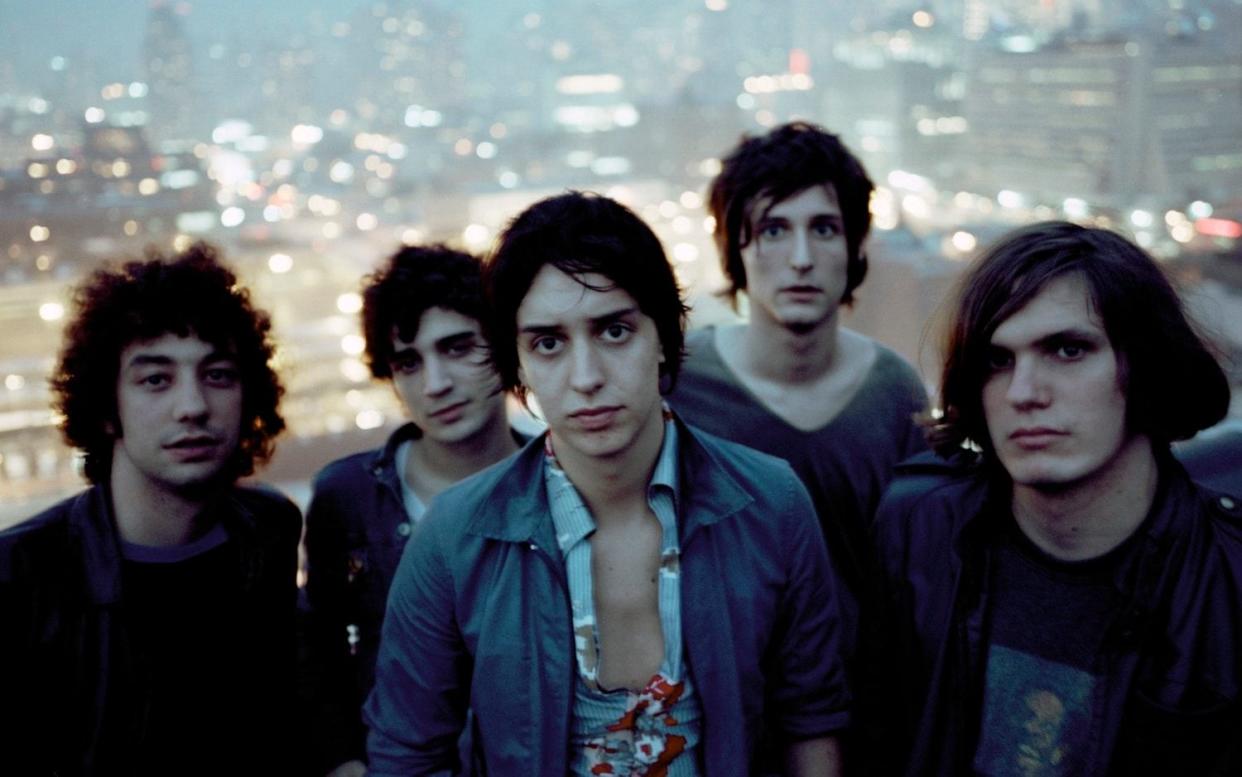
- Oops!Something went wrong.Please try again later.
- Oops!Something went wrong.Please try again later.
- Oops!Something went wrong.Please try again later.
- Oops!Something went wrong.Please try again later.
At last October’s London Film Festival, watching the UK premiere of one of the most eagerly anticipated music documentaries of the year, I nearly fell off my seat. Or, rather, sank into it, mortified. There I was, in the section about the hounding and objectification of Yeah Yeah Yeahs’ frontwoman Karen O, inquiring after her sexual history and guff about her eating habits.
Meet Me in the Bathroom is an adaptation of the bestselling 2017 book of the same name by American music journalist Lizzy Goodman. Subtitled Rebirth and Rock and Roll in New York City 2001-2011, the 600-page tome is an exhaustive oral history of a period when a wave of bands tumbled out of the city, revived guitar music and took over the world – briefly.
“We were all – every kid in the crowd and every person on stage – chasing the same thing: a feeling of rebellion, of possibility, of promise, of chaos,” writes Goodman of the period, 20 years ago, when Yeah Yeahs Yeahs, The Strokes, LCD Soundsystem and Interpol ruled, if not necessarily the global pop airwaves, then certainly the pages of the music press.
Compared to Goodman’s book, the no-holds-barred film – directed by British filmmakers Will Lovelace and Dylan Southern – has a tighter focus, roughly from 1999 to 2003, meaning it more astutely charts the vertiginous rise and degenerate decline of a scene that retrospectively became known as “indie sleaze”, and in which journalists played their own unedifying part.
Case in point: Meet Me in the Bathroom’s series of unidentified voiceovers, in which we hear a Scottish accent inquiring: “Have you ever had a same-sex experience?” while an American woman probes, “Do you have any thoughts on chastity?” and an Englishwoman wonders, “Do you remember your first kiss?”. Another Englishwoman: “Have you received any death threats?” “What’s your favourite meal?” asks the Scotsman again. “Favourite meal?” she replies, nonplussed.
That Scotsman was me. In spring 2020, I was contacted by the film’s producers. In the course of their pre-production research, they'd found several stories I’d written about the bands on which they were focusing. Did I still have the audio tapes? I did, on dusty C90 cassettes. As it was the early days of the first lockdown, I had the time to ferret them out from the bowels of my cellar.
Even though I knew the producers ended up editing in several snippets of my interviews (and paid me a fee for the usage), I was unaware of the specific chunks they’d filleted from hours of two-decades-old interviews. Now that I was hearing the exchanges for the first time since I’d originally asked the questions, the YYYs lines were, clearly, cringe. Full disclosure: I was told to ask those questions by a newspaper. But still. Shameful.
That’s how that Noughties scene ended up, with the ravenous intrusion of a media giddy over these ker-razy New Yorkers. But when it started, as I know from other, more respectable personal experiences, it was hugely thrilling. It propelled to the fore talented backroom figures like LCD Soundsystem's James Murphy, a producer-turned-frontman who is another key figure in Meet Me in the Bathroom.
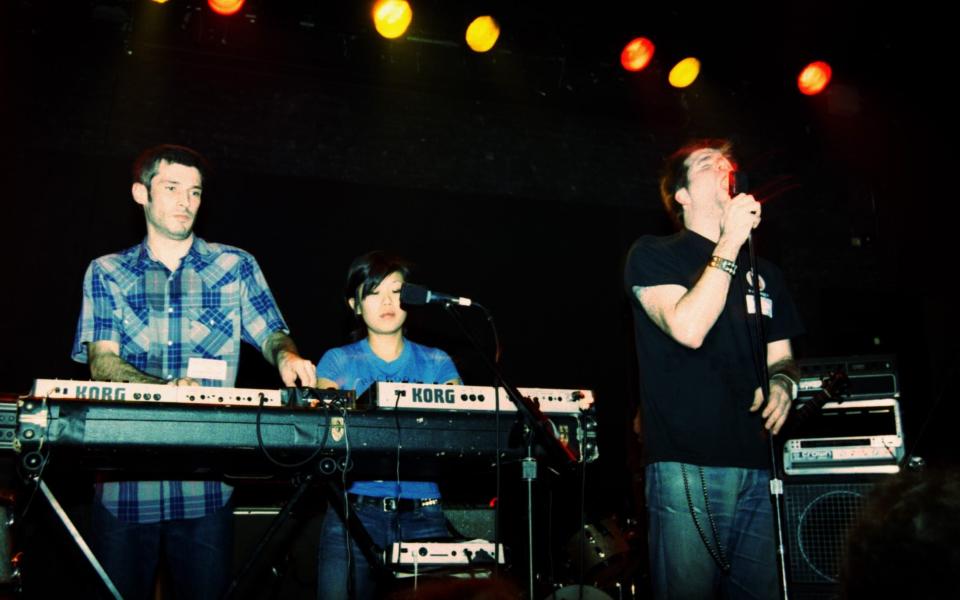
On assignment for dance magazine Mixmag, I met him in his Brooklyn apartment, an encounter that also made its way into the film. “In ’99, 2000, there was no such thing as a rock party,” he explained to me in the evening gloom of his vinyl-filled flat. “So I’d be DJing in a techno place and I’d be E’d up and think it was a great idea to drop [The Stooges’] Loose. Which seems a bit obvious now. But, Jesus, people wanted to kill me!”
He was talking about the disruptive early days of DFA, the production duo he formed with British musician Tim Goldsworthy. Their work with The Rapture transformed the Californian transplants into “the disco Strokes”. Before the band's 2002 dance-rock anthem House of Jealous Lovers became a cowbell-banging albatross round everyone’s necks, one that would ultimately contribute to the band’s bitter split from Murphy, it made the producer one of the scene's most compelling figures. Albeit one, like many of his peers, unprepared for fame.
Early in the film, in shaky footage, circa 1999/2000, of the poky stage of a New York dive bar, we see the five Strokes stumble and fall, making a boozy, clattering, guitar-rock racket. It’s hard to imagine that, within little over a year, this skinny-jeans-and-ties outfit will have signed to iconic British indie record label Rough Trade, won a Brit award (Best International Newcomer 2002), headlined Reading Festival and starred on multiple UK magazine covers, including the Saturday Telegraph.
And so it was the late summer of 2003 when I was sent to New York to interview them for that magazine piece, to report on the follow-up to 2001's wildly applauded first album, Is This It. They had completed Room on Fire only 12 days previously and were in the mood to party.
We spent the first night roaming the streets of the East Village, falling in and out of bars till the wee hours, 25-year-old frontman Julian Casablancas decrying the changes in their already-gentrifying neighbourhood (“f—in’ yuppies!”). The second night ended late in the Upper West Side apartment of the parents of bass player Nikolai Fraiture. It was gone 4am and the Jägermeister shots were flying.
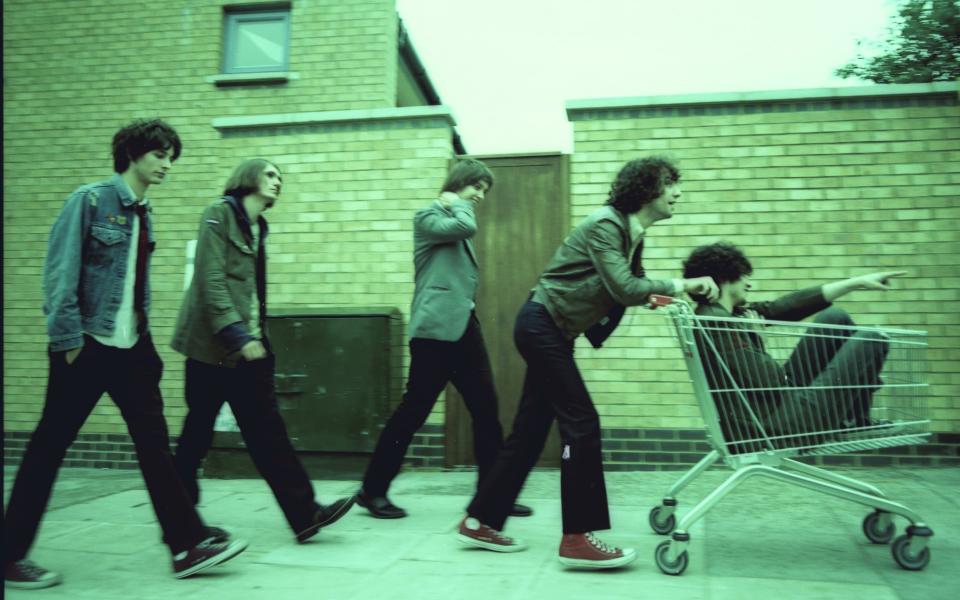
Casablancas was already fearful of the fame that was stalking him relentlessly. When I mentioned But Julian, I’m A Little Bit Older Than You, Courtney Love’s seemingly nudge-nudge-wink-wink take on their encounter backstage at a Strokes gig in Los Angeles, he literally recoiled.
“Have you heard it?” he said of a song that would appear on Love’s America’s Sweetheart album the following February. “Is it bad or good? If it was a big hit...” He shuddered in anticipatory fear.
And yet while Casablancas and Co. enjoyed laudatory magazine headlines – “Why New York’s finest will change your life – forever!” “The coolest band on earth.” “Every band in the world wants to be the Strokes” – it was very different for YYYs. Their first NME cover, emblazoned over a picture of a sweaty onstage O, said: “Cool! Sexy! Drunk!”
Meanwhile, their frontwoman – a brilliant singer and songwriter, a mesmerising performer who would become the most revered woman in alternative music – was fending off the “predatory gaze” of photographers and struggling to avoid upskirt shots from the mosh pits. And she was enduring journalists’ questions the likes of which would never be put to Casablancas, Murphy or Interpol’s Paul Banks.
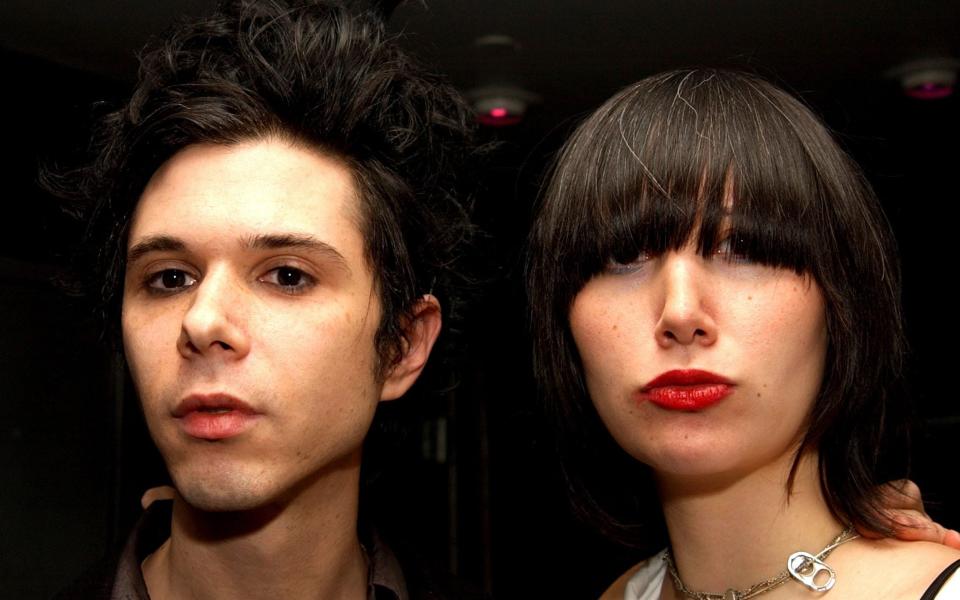
The difference in experience was clear when I interviewed O, then a shy 24-year-old, in San Francisco for The Telegraph, also in 2003. She was sitting in a basement dressing room in the Great American Music Hall.
Discussing her costume at the previous night’s warm-up gig, she broke down for me the origins of the material she'd had crammed into her red and black polkadot swimsuit, which she then launched from the stage in little fluffy clouds.
“We gutted this big stuffed lamb that we were going to integrate into the show. I was gonna wear it on my head, so I'd be the sacrificial lamb. But then I didn't have the guts to do it."
Having watched Meet Me in the Bathroom again last week, I can now see her point much more clearly. On the early Noughties alt rock altar, Karen O was sacrificed and lionised in equal measure.
That’s where we ended up: with magazines and newspapers seeking ever more sensationalism in their coverage of bands who’d quickly gone from New York downtown dive bars to international festival headline slots; with insensitive idiots asking intrusive questions about sexual preferences.
And so the hype twisted in on itself. And in a not-unrelated development, the scene was imploding, too.
The Strokes squabbled as Room on Fire was deemed a failure, even as they were told it had sold a far-from-shabby 650,000 copies. Karen O fled New York for LA. Murphy and Goldsworthy separated in the wake of LCD Soundsystem releasing 2002’s Losing My Edge, a sarky take on the whole “scenester” thing but, for Goldsworthy, less sarky than “stupid”.
Things were considerably darker still within the ranks of The Strokes, and amongst their hangers-on. “I knew that I would shoot up drugs from a very young age,” we hear guitarist Albert Hammond Jr say in Meet Me in the Bathroom. “When it came it wasn’t like: ‘What am I doing here?’ I was kinda like: ‘I made it.’ I was home.”
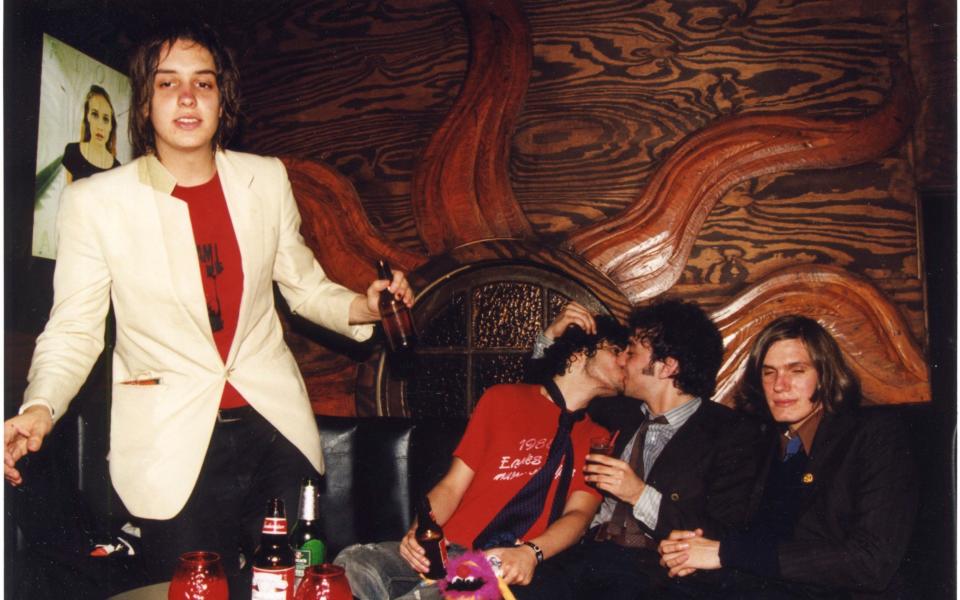
I remembered (and described) him as the most stylish member of the band, and their resident gourmand. But sometime after I met him, with the pressures on The Strokes skyrocketing, things spiralled for Hammond, to the extent where he was smoking crack and trying “everything to get fired”. Worse, “there were just so many times that I was just so close to dying.”
The band blamed hanger-on musician Ryan Adams for introducing Hammond to heroin. Sometime after that, oblivious to Hammond’s travails, I interviewed the now-disgraced singer-songwriter in London for The Word magazine, and remember being unable to stop staring at Adams’ rotten teeth.
But for all the unreliability of his narration, there may be something in what we hear Adams state in the film.
“I don’t think that that meeting was about heroin,” he says of a New York bar showdown at which all five Strokes excommunicated him from their circle – then bailed while he was in the toilets (they literally left him in the bathroom).
“It was about jealousy… Albert and I were good friends. But this world that The Strokes were in was slipping out of their hands. And maybe Julian felt like it was slipping out of his control.”
The Strokes would never be as big again, which was probably a healthier outcome for all concerned. For a little more than a New-York minute, though, that place and these bands were the most exciting things in music.
As Meet Me in the Bathroom shows, until the sleaze mutated from “indie” to “actual”, it was fun while it lasted. And the records sound terrific to this day. I still feel awful about asking Karen O those questions, though.
Meet Me in the Bathroom is in cinemas now

